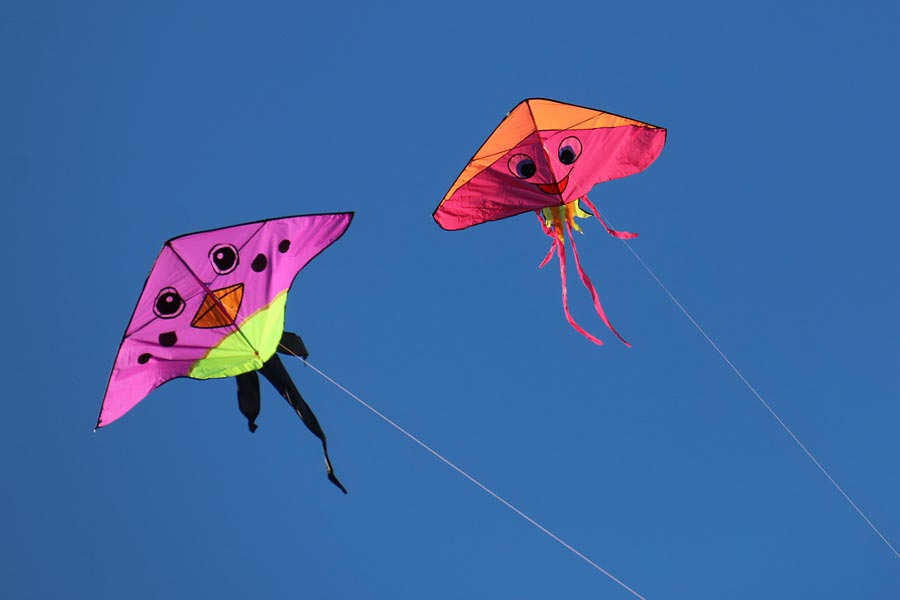With such a long history, China has developed many unique and traditional folk games and pastimes, and Chinese people have their own special ways to express their vigor and enthusiasm.
Kite Flying
Nowadays, kite flying has become a popular recreation far and wide in China. Its history can be traced back more than 2,000 years ago.
Legend has it that the first Chinese kites were made of wood and called 木鸢 Muyuan (wooden kites) by the famous architect and carpenter Lu Ban during the Spring and Autumn Period; after the invention of paper, kites began to be made of this new material called 纸鸢 Zhiyuan (paper kites).
People today make colorful kites in the shapes of animals, birds, butterflies, fishes and centipedes, and some animal-shaped kites can even roll their eyes and flutter their wings. In modern China, kites are used not only as toys, but also as exquisite handicrafts worthy of collection, and it has been praised as the forerunner of modern aircraft. In 1989, the International Kite Federation was established, headquartering Weifang in Shangdong Province. The well-known Weifang Kite Festival has become an annual feature in the country, drawing hundreds of participants each April from home and abroad.
Shuttlecock Kicking
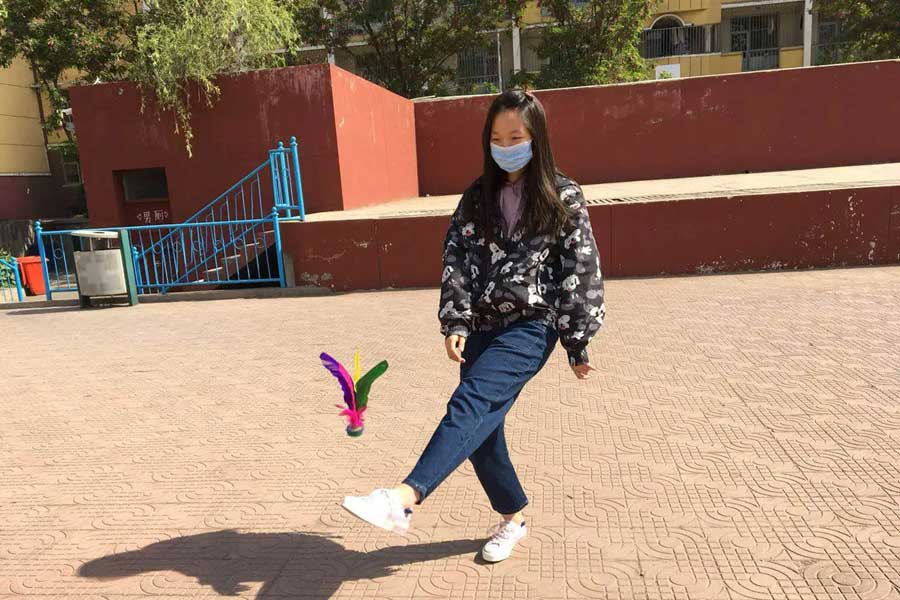
Shuttlecock Kicking is one of the traditional popular folk games in China, and it is suitable for people of all ages. Some records date its origin as far back as the Han Dynasty. It prevailed during the Tang Dynasty, and in the Ming Dynasty, the game was so popular that there appeared formal Shuttlecock Kicking competitions. In the Qing Dynasty, shuttlecock kicking reached its climax in terms of both making techniques and kicking skills; while in the 1930s, the sport of shuttlecock kicking was in decline for a time. After the establishment of the PRC, it regained vitality and the first formal National Shuttlecock Kicking Competition was held in Guangzhou City in 1956. Since the establishment of the China Shuttlecock Kicking Association in 1987, the national shuttlecock kicking tournament has been held annually.
Shuttlecock kicking is not only great fun but also provides vigorous physical exercise. Besides, it’s very convenient for people to play, for only a very small area is needed to kick the shuttlecock, and it can be practiced just anywhere and anytime.
Tug-of-War
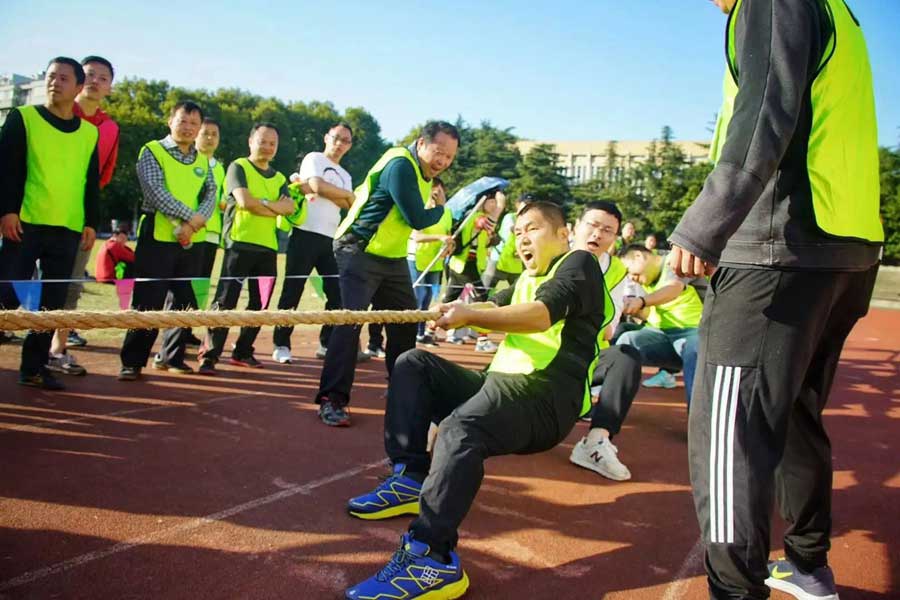
Tug of war, also known as rope war or rope pulling, is a sport that directly pits two teams against each other in a test of strength.
The origins of tug of war are uncertain, but according to a Tang Dynasty book, tug of war, under the name “hook pulling”, was used by the military commander of the State of Chu during the Spring and Autumn Period to train warriors. During the Tang Dynasty, Emperor Xuanzong promoted large-scale tug-of-war games, using ropes of up to 167 meters with shorter ropes attached and more than 500 people on each end of the rope. Each side also had its own team of drummers to encourage the participants. Both participants and audience joyously shout to boost the pullers’ morale, presenting the grand and liveliest scene. Later, it developed into a sport and popular folk custom.
Skipping Rope
Skipping ropes has a long history in China. It is a fun sport for both children and adults. With simply a rope, people have invented many ways to play and compete.
The most common way, also the easiest way for exercise, is to skip once in a round. Varieties can be wonderful and diverse. A skilled person can turn the rope many times in quick succession while keeping his or her feet off the ground in a single jump. Couples can skip together, or with a long rope two people turn it, and a whole group of people joins in. In view of its sports effect, now students are encouraged to play this game, and many skipping ropes meetings are held by their schools. Skipping ropes has also been adopted as part of keeping-fit programs by adults.
Playing Chinese Yo-Yo (Kongzhu)
The Chinese yo-yo is a toy from China consisting of two equally-sized discs connected with a long axle. The Chinese yo-yo is kept spinning on a string tied to two sticks at its ends. Each stick is held in one hand.
The oldest records of the Chinese yo-yo appeared in ancient Chinese literature written 1,700 years ago. It is considered to have been practiced for more than 2,000 years and to be one of the three major traditional folk games that originated from China along with the shuttlecock and the kite. In modern times, it is used as a children’s toy and as a performance tool in juggling and sometimes in Chinese ethnic dance. It is possible to perform an enormous variety of tricks with the Chinese yo-yo, and it is widely popularized among common people throughout China.
Walking on Stilts
It is said that stilt walking originated in ancient times when primitive people bound sticks onto their legs to make them taller so that they could reach the wild fruits in the trees.
According to historical records, it has been more than 2,500 years since walking on stilts showed up in China.
Walking on stilts has become a popular performance. In the northern part of China, stilt-walking performers usually play the roles of fisherman, matchmaker, foolish son of a high official, Taoist nun, monk, etc. in a very funny way. In the southern part of the country, the roles of Guan Gong (Lord Guan), Daoji (commonly known as Ji Gong), fairy He Xiangu, immortals and clowns are usually played. The performers sing and walk at the same time, acting vividly in an amusing way.
Playing Hide-and-Seek game
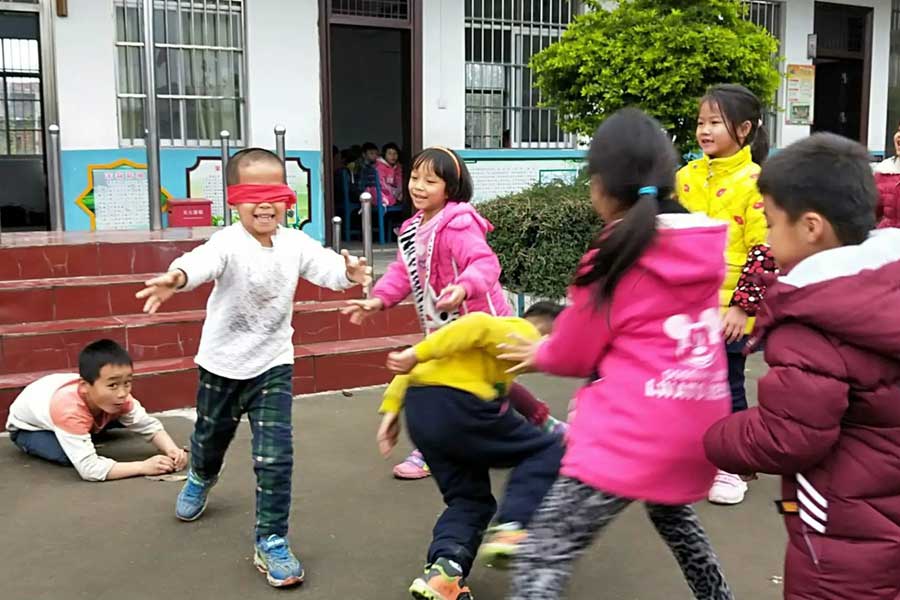
Hide-and-seek, also known as 捉戏 zhuoxi, is one of the most common games for children. The game can be played as long as there are at least two people. It is recorded in the works of the Qing Dynasty, “One child is blindfolded with silk before starting to seek others. This is called 扎盲盲 zhamangmang.” In addition, there are 摸瞎鱼 moxiayu (literally seeking blind fish), 瞎子摸象 xiazimoxiang (literally blind men feel an elephant), and many other similar favorite games of children.
It is said that Emperor Xuan Zong of the Tang Dynasty is a master player of hide-and-seek. In the reign of Qian Long and Jiang Qing, there was an imperial artist Shen Qinglan, who once produced a painting “Children-Playing”, in which 6 children are playing hide-and-seek.
Riddle Guessing
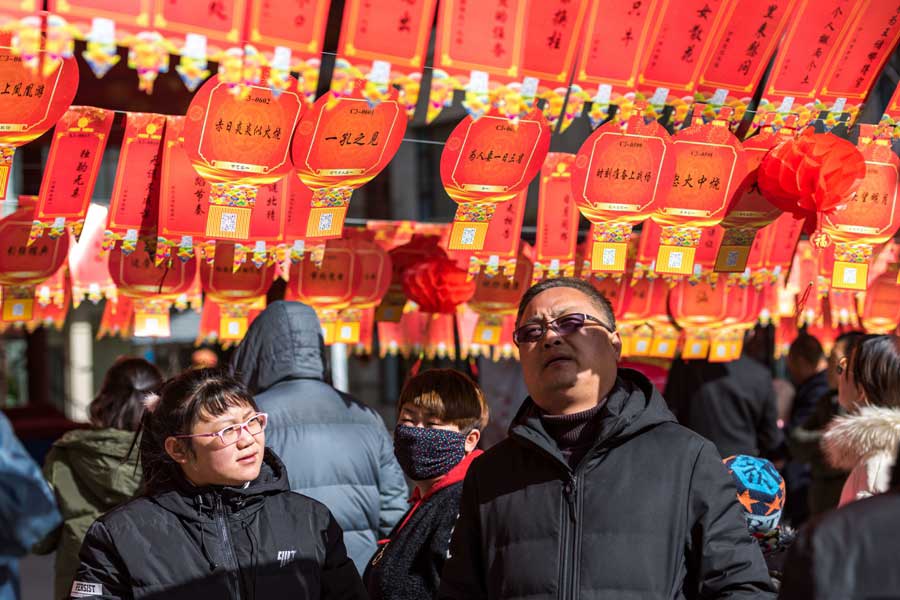
Riddle guessing may be accounted as the most ancient intelligence-benefiting game. In the ancient books of the Zhou and Qin Dynasties, it is recorded that riddles were named 隐语 yinyu (literal enigma) that employed such techniques as metaphor, analogy and implication to hide what riddles refer to. In the Han Dynasty, yinyu developed in two directions: one is characterized by the portrayal and the other is mainly about the meaning and form of words, with the former being popular among folks and the latter being the main way of intelligence racing among men of letters.
What’s more, in the Song Dynasty, there appeared professional artists who specialized in making riddles, who were called commercial riddle makers. They put up stands at such public places of entrainment as 瓦子 wazi, attracting people to participate in riddle guessing. He who guessed rightly got the prize; he who guessed wrongly paid money. Meanwhile, this game was combined with the lantern show on the Lantern Festival. Therefore, lantern riddles pasted on the lanterns for amusement and enjoyment were produced.
Mahjong
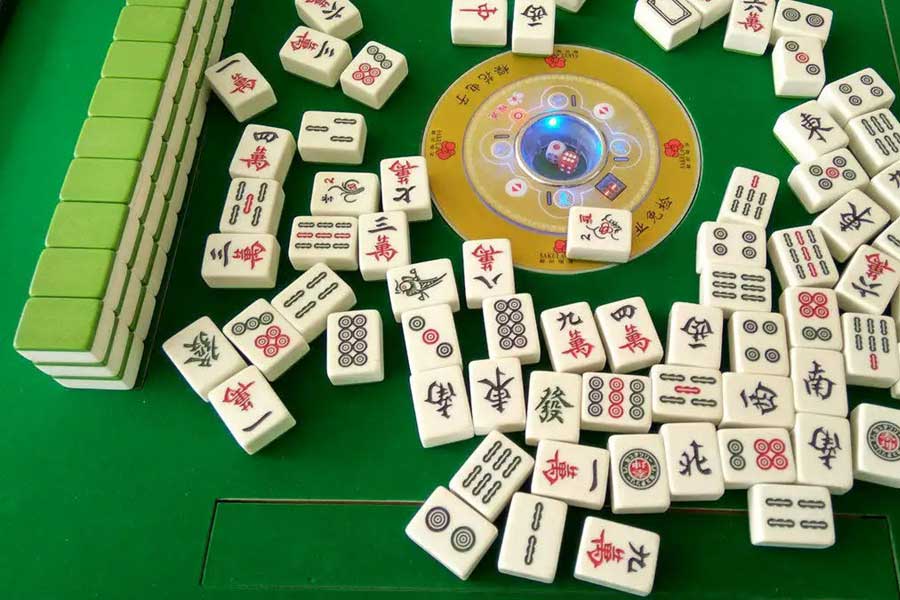
Mahjong is a game that originated in China, commonly played by four players. One of the myths of the origin of mahjong suggests that Confucius, the Chinese philosopher, developed the game in about 500 BC. Besides, many historians believe it was based on a Chinese card game called madiao in the early Ming Dynasty. In the Qing Dynasty, a new gambling art – mahjong, eventually took shape. Mahjong culture is deeply ingrained in China. For example, many gambling movies have been filmed in Hong Kong, and a recent sub-genre is the mahjong movie. Today mahjong becomes a social game, and it is a popular pastime in China.
Cricket Fight
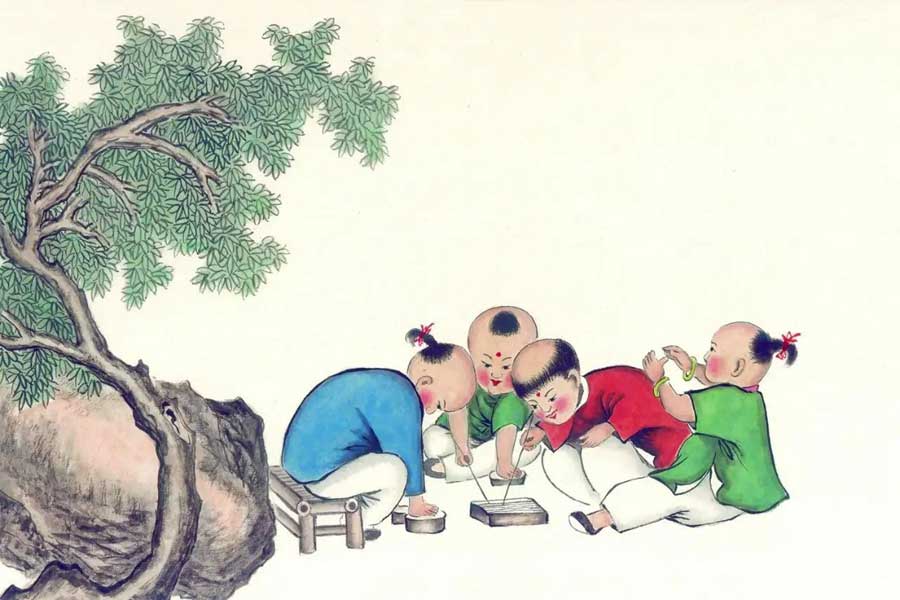
The earliest historical records about cricket can be found in the Cricket Classic by Jia Shidao in the Southern Song Dynasty. It was called the encyclopedia of cricket, which has long been lost.
In the Qing Dynasty, the government had once supervised cricket raising. In addition, special cricket fighting venues were established and managers made profits by taking a percentage from the winnings. Influenced by the Han culture, the royal family of the Qing Dynasty and the Eight Banners descendants also took to playing this game. Later, even Empress Dowager Cixi was listed among the players.
Untying a Chain of Rings
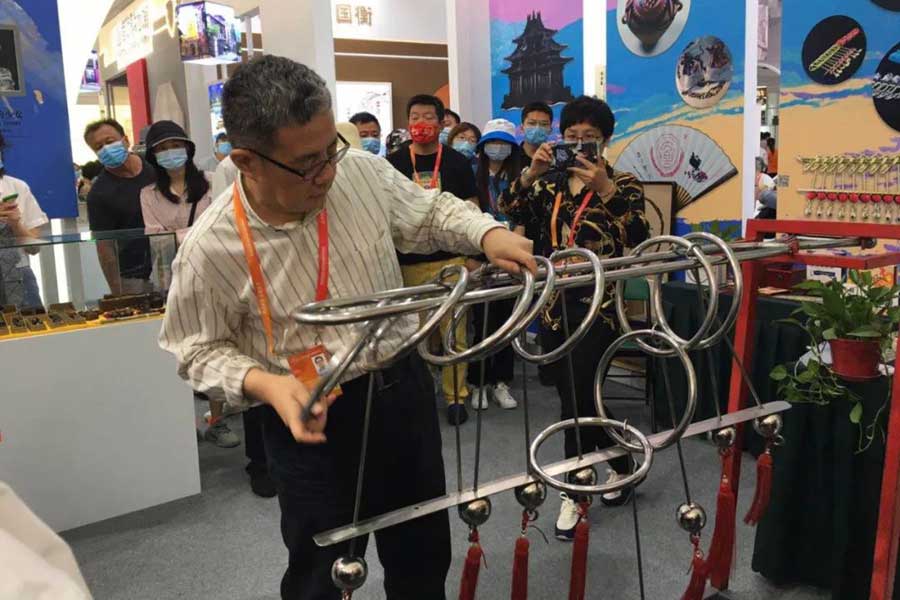
Untying a chain of rings is a traditional intellectual game. The rules go like this: first, one ties a number of rings together into a chain and then he who unties them is the winner. The chain of rings has various structures: five-ringed, seven-ringed, nine-ringed, eleven-ringed, and even thirteen-ringed. Among them, the nine-ringed is the most popular. This game made its first appearance in the Warring States Period. Thenceforth, it remained prevalent through dynasties. Su Shi, a famous poet in the Song Dynasty, writes: “It is easy to untie a chain of rings as if with the help of a god’s hands.” This indirectly reflects the complexity and difficulty of untying a chain of rings. In the reign of Emperor Jiajing of the Ming Dynasty, Karl Dane, an Italian mathematician came to China. He could not admire more the Chinese chain of rings.
Lion Dance and Dragon Dance
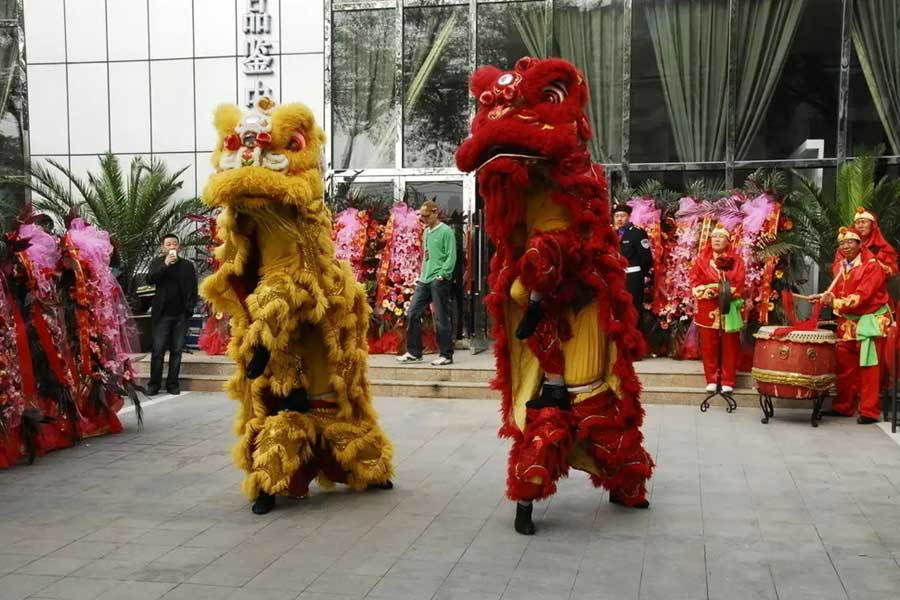
Lions live in Africa and South America. After the Han Dynasty, it was introduced into China. It is generally accepted that Lion Dance came into being as long ago as in the Three Kingdom Dynasties, which was initially prevalent in the army and spread among the ordinary people afterward.
The lion dance is a game very popular with ordinary people. It usually appears in towns and villages during the Spring Festival and idolatrous processions, adding much to the joyous festive air.
The folk lion dance falls into the Northern Lion Dance (violent lion dance) and the Southern Lion Dance (gentle lion dance). Violent lion dance attaches importance to martial arts with nimble movements and high techniques. While gentle Lion dance focuses on facial expressions with exquisite movements which strive to depict the lion’s docile and lovely bearings and dynamic, frolicsome character.
The dragon dance is the vestige of totem worship in ancient times. The performance was not only to pray for rain and offer sacrifices but also to entertain.
During the Tang and Song periods, dragon lantern dance already became an ordinary artistic form in the performance of traditional programs of 社火 shehuo (a religious procession) and team dance. Dragon dance, in the Ming and Qing Dynasties, was listed among folk festival entertainments with peculiar flavor.
Dragon-Boat Racing
A bronze drum from the Spring and Autumn Period was unearthed in Yin County, Zhejiang Province, on which racing boat lines were found. It can be inferred that dragon-boat racing has its origin in the Spring and Autumn Periods in the South. Archaeological researchers also found racing boat pictures on the bronze drum of the Han Dynasty unearthed at Stone Village Mountain in Yunnan Province. According to ancient records, the dragon boat in the Ming and Qing Dynasties was about 33 meters in length with 16 oars on either side.
On the racing boat, drums are arranged to boost the morale of the race attendants and the atmosphere. Bladders of pigs live ducks, or geese afloat on the surface of the river work as live marks instead of fixed poles of the dead marks. Many fleeting boats struggle for them, making the race more interesting and appealing.
The legend goes that Qu Yuan, a senior official in Chu, was unfortunately slandered and forced to exile and took his own life by jumping into the Miluo River on the 5th day of the 5th lunar month. People in Chu were in great sorrow after hearing the news and they drove boats to rescue him. The custom of dragon boat racing on that day was then formed and has gradually become a sporting event.
Waist Drum Dance
Waist-drum dance boasts a long-standing tradition and enjoys great popularity in Ansai, northern Shaanxi Province. Characterized by a variety of drumbeats and accompanied by folk songs, percussion instruments and wind instruments, the unique Ansai drum dancing can be generally classified into “soft swing dancing” and “martial arts dancing”. The performance scene is quite impressive with diversified arrays which integrate dance, song, gymnastics and vigorous martial arts movements. It serves as a display of the traits in the character of northern Shaanxi villagers, who are known far and wide as being valiant and heroic. Sometimes the number of performers may reach several hundred. The imposing scene is full of grandeur with great momentum.
It is a traditional custom for young people in villages in northern Shaanxi to do the waist drum dancing to greet Spring Festival and Lantern Festival. A dancer with a red drum tied to his waist holds a drumstick with red silk, beating the drum while dancing. The rhythmical drum beats are full of power and grandeur and the dance is vibrant and vigorous, reflecting the straightforward and uninhibited character of villagers in northern Shaanxi Province. At the climax of the dance, dancers beat drums while jumping into the air, shouting “Haihai” excitedly. It is an expression of their happy and passionate feelings.
Swinging
Swing, as a traditional sport and program on festive occasions, is very popular among Hans and other minorities such as the Korean nationality and the Lahu nationality. In the Han and Wei Dynasties, swing already evolved from a military training program into an entertainment enjoyed by both the imperial palace and the ordinary families, especially at the Beginning of Spring (the first of the 24 solar terms), Cold Food Festival, and many other festivals. It became an indispensable program among the diversified celebrating activities. Swinging was so popular at Cold Food Festival that it was even referred to as Swinging Festival.
It is said that swinging originated during the reign of Emperor Wu of the Han Dynasty. It was invented as a game for the imperial palace to celebrate his birthday and wish him a long life of one thousand years. Therefore, at that time, it was called 千秋 qianqiu (one thousand years) which was falsely rumored as 秋千 qiuqian in later ages.
In the Tang Dynasty, this sport, prevalent in the imperial palace, was called half immortal game. Beautiful imperial concubines were gorgeously dressed up and richly ornamented and then sat or stood on swings with two hands gripping the ropes, swinging gracefully, dizzily pleasant as immortals. Hence the vivid name—half immortal game.
Setting off Fireworks
Almost every country sets off fireworks at important festivals. This traditionally ceremonial entertainment originates from China. The Dynasties of Sui and Tang saw the earliest fireworks which fell into two categories. One is a gun-powered wire firework: figures, objects, birds, flowers, pavilions, buildings, and many other varied patterns were made of metal wires on which gunpowder is coated. They present varied fantastic scenes against the background of dark night. The other is a tube firework with gunpowder put into a paper tube. After it is lighted, it will spurt multicolored flames.
In the Ming Dynasty, gun-powered wire fireworks changed from planes into three-dimensional ones. Different layers of gun-powered wires were vertically and horizontally arranged and designed. Then it was put into a big box to be hung on a stand. Ignited, the wires in the box caught fire and fell slowly layer by layer, demonstrating magical and dimensional sights.

